Mobile App Financial Model
This 5-Year, 3-Statement MS Excel Mobile App Financial Model include revenue streams, cost structures, and financial statements to forecast the financial health of a mobile application. The model assumes revenue generation through subscriptions, in-app purchases, advertisements, and partnerships.
Revenue Streams for a Mobile App
A mobile app can generate revenue from various sources, including:
- Subscription Model (multi-tier pricing)
- In-App Purchases (one-time purchases, premium content, virtual goods)
- Advertising Revenue (banner ads, video ads, affiliate marketing)
- Sponsorships & Partnerships (corporate sponsorships, co-branded content)
- Freemium Model Upsells (free version with paid upgrades)
Income Statement (Profit & Loss Statement)
The income statement outlines revenue, expenses, and net income over a period.
Revenue:
- Subscription Revenue – Based on a 6-tier subscription model.
- In-App Purchases – Revenue from one-time purchases.
- Advertising Revenue – Revenue from ad networks, sponsorships.
- Partnership Revenue – Deals with brands or other apps.
Cost of Goods Sold (COGS):
- Payment Processing Fees – Fees from App Store, Google Play, Stripe, etc.
- Server Costs – Hosting, cloud storage, bandwidth.
- Customer Support – Personnel, chatbots, ticketing system.
Operating Expenses:
- Development Costs – Salaries for developers, designers, QA teams.
- Marketing & User Acquisition – Social media ads, influencer marketing.
- Administrative Expenses – Office rent, legal fees, accounting.
Net Income Calculation:
Net Income = Total Revenue – (COGS + Operating Expenses + Taxes)
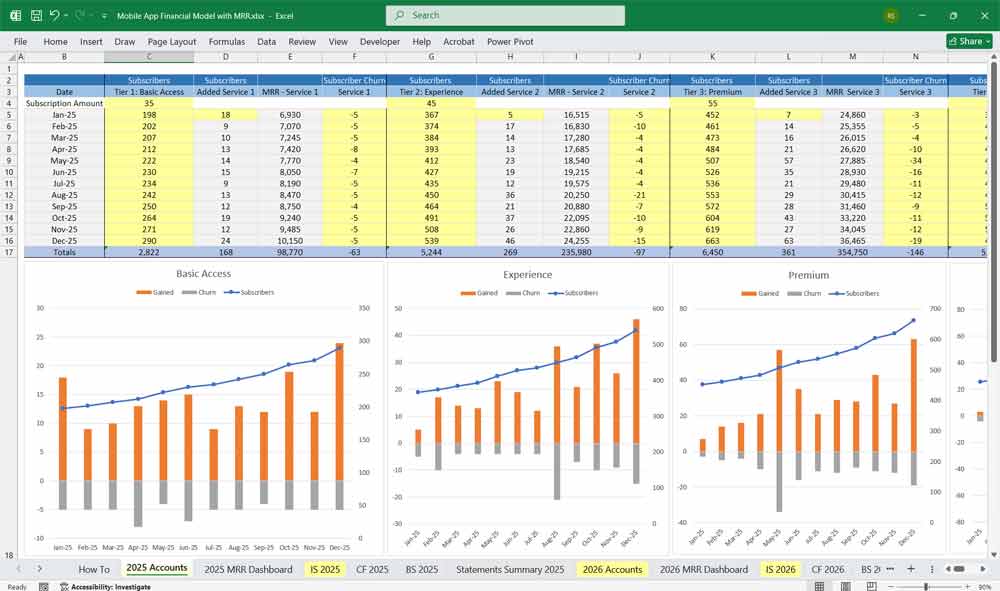
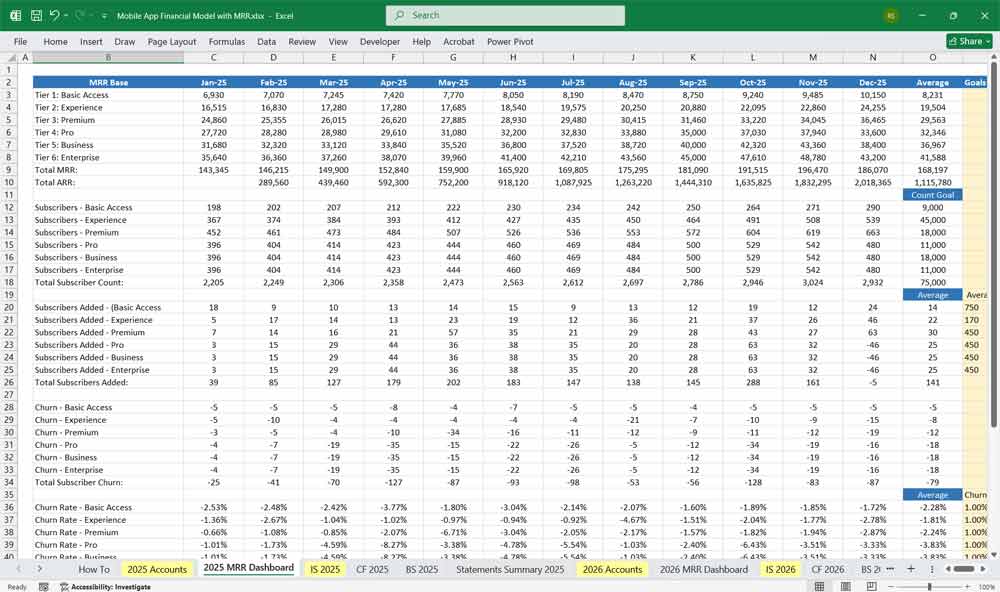
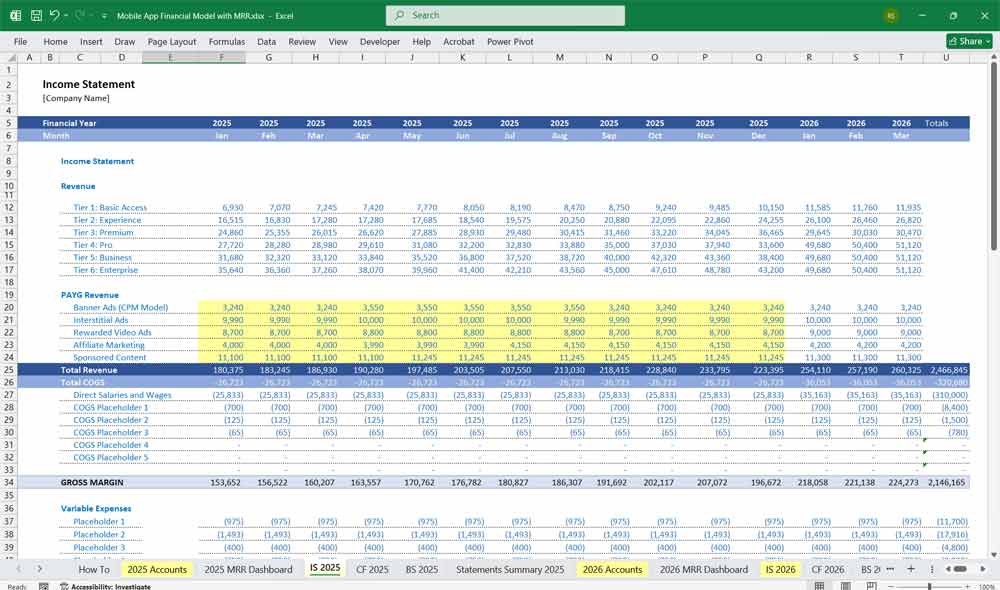
Mobile App Cash Flow Statement
The cash flow statement tracks cash inflows and outflows to assess liquidity.
Operating Cash Flow:
- Cash Inflows:
- Subscription payments
- Ad revenue payouts
- In-app purchase payments
- Cash Outflows:
- Server costs, payroll, marketing expenses
- Payment processing fees
Investing Cash Flow:
- Investment in new features, platform updates
- Capital expenditures (new server infrastructure)
Financing Cash Flow:
- Investment from venture capital or angel investors
- Loan repayments (if applicable)
Net Cash Flow = Total Inflows – Total Outflows
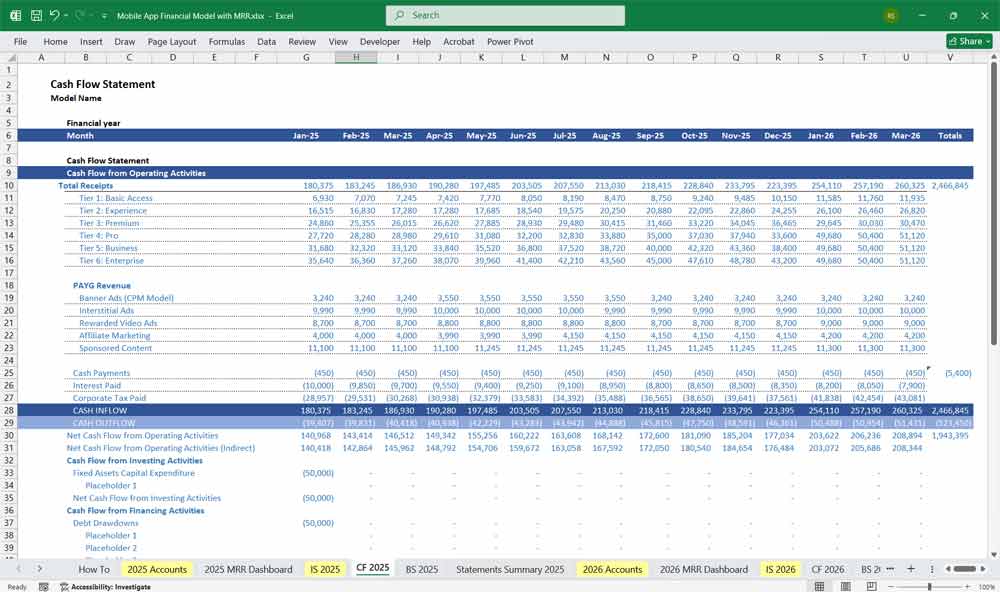
Mobile App Balance Sheet
The balance sheet provides a snapshot of the app’s financial position.
Assets:
- Current Assets:
- Cash & cash equivalents
- Accounts receivable (ad network payments pending)
- Subscription revenue due (deferred revenue)
- Long-term Assets:
- Software development costs (capitalized R&D)
- Servers, equipment
Liabilities:
- Current Liabilities:
- Vendor payments
- Ad payout obligations
- Taxes payable
- Long-term Liabilities:
- Loans, venture funding
- Deferred revenue from annual subscriptions
Equity:
- Retained earnings
- Shareholder equity (if funded by investors)
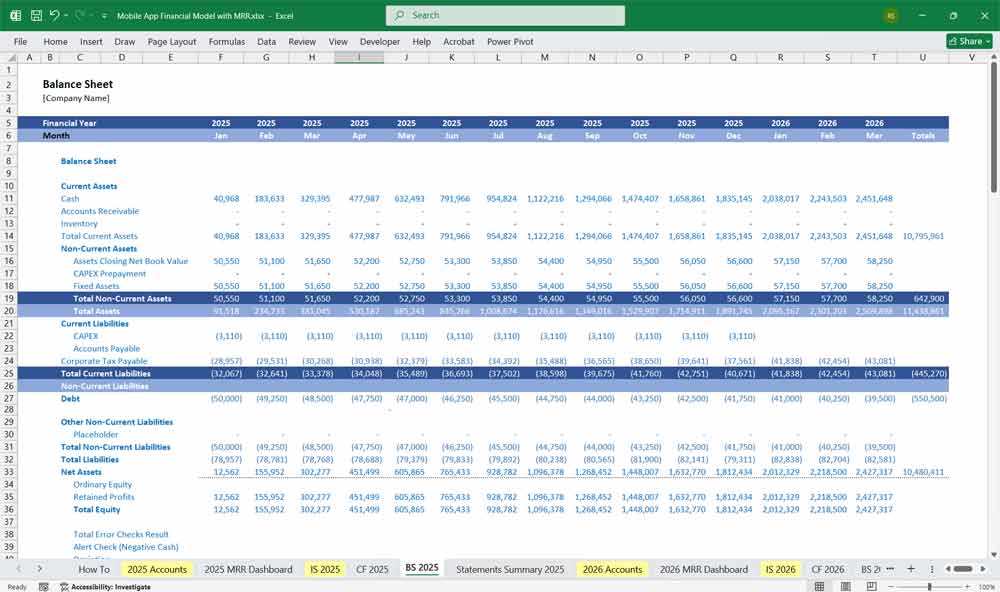
6-Tier Subscription Model for a Mobile App
A tiered subscription model maximizes revenue by offering varied features at different price points.
Subscription Tiers:
Tier 1: Mobile App Access
- Limited features, basic UI, ads included
- Monetized through ads, upsells
Tier 2: Mobile App Experience
- Removes ads
- Includes priority customer support
Tier 3: Mobile App Premium
- Ad-free
- Extra content or in-app tools
- Customization options
Tier 4: Mobile App Pro
- Everything in Tier 2
- Offline mode
- Exclusive content
Tier 5: Mobile App Business
- Advanced features (AI tools, analytics)
- API access (for SaaS-based apps)
- Early access to updates
Tier 6: Mobile App Enterprise
- Team collaboration features
- Dedicated account manager
- Enhanced security & data control
Annual Subscription Discount:
- 15-20% discount for yearly prepayments to improve cash flow.
Churn Analysis for a Mobile App
Churn is one of the biggest revenue killers for App Developer services. A 1% reduction in churn can significantly increase profits over time. Analyzing churn by subscription tier, revenue impact, and reasons for cancellation helps implement data-driven retention strategies to maximize long-term user value.
Strategies to Reduce Churn
Retention Strategies
✅ Content Personalization: Use AI-driven recommendations to increase engagement.
✅ Loyalty Programs: Discounts for long-term subscribers.
Payment Recovery for Involuntary Churn
✅ Automated Payment Retries: Retries for failed transactions.
✅ Card Update Reminders: Notifications for expiring payment methods.
Engagement Tactics
✅ Win-Back Campaigns: Email campaigns offering discounts to churned users.
✅ Surveys & Exit Polls: Understand cancellation reasons and address pain points.
Advertising & Additional Revenue Models
A. Ad Revenue Streams
- Banner Ads (CPM Model)
- Displayed on UI screens ($1–$5 per 1,000 impressions)
- Interstitial Ads
- Shown between app transitions (higher CPM: $5–$20)
- Rewarded Video Ads
- Users watch an ad to gain an in-app reward (engagement-focused)
- Affiliate Marketing
- Revenue-sharing by promoting third-party products
- Sponsored Content
- Paid sponsorships with brands
B. Partnerships & Co-branding
- Cross-promotions with other apps
- Exclusive sponsorship deals
C. One-Time Purchases
- Digital goods (stickers, skins, themes)
- Limited-time premium content

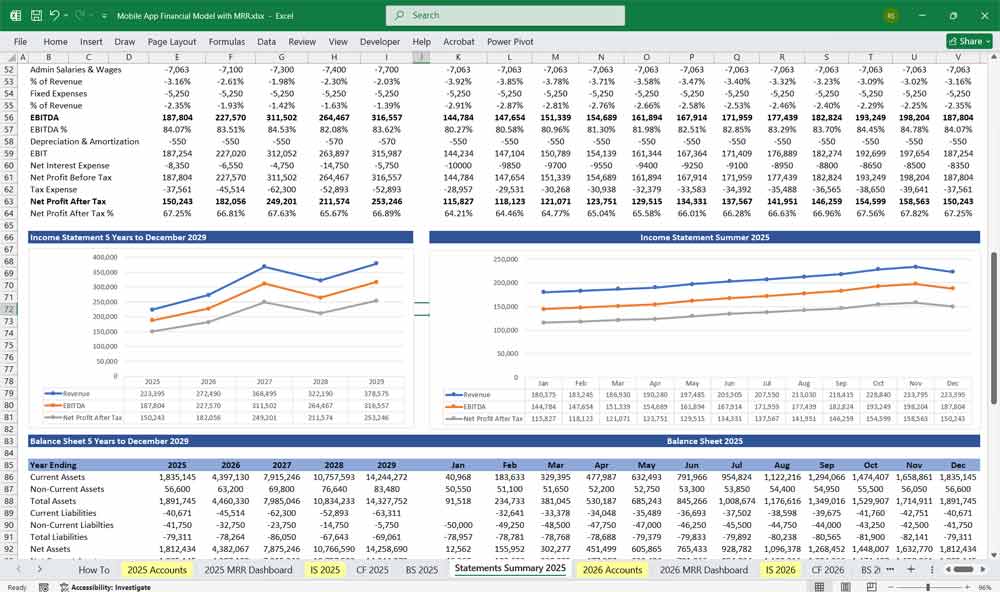
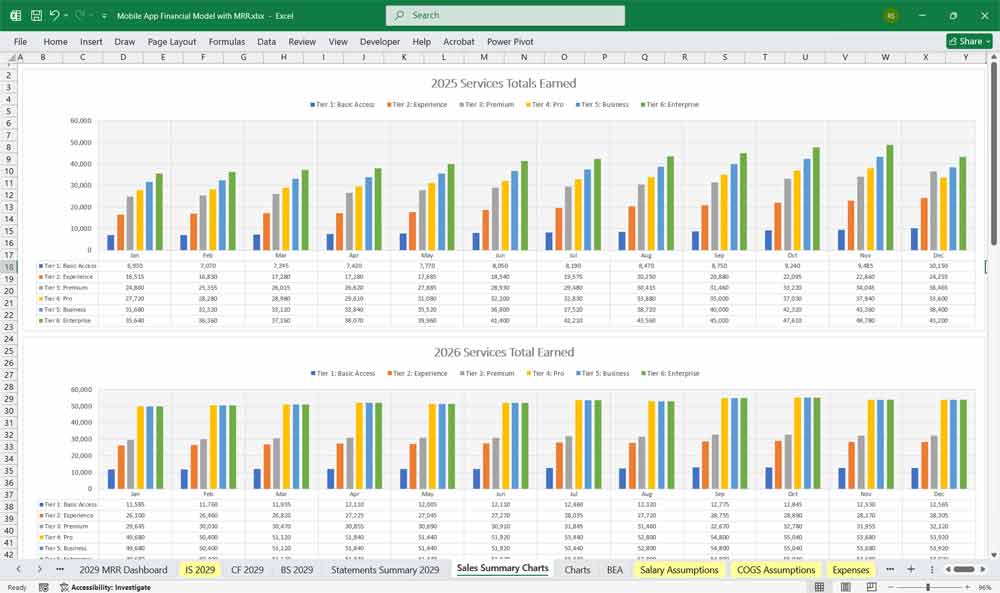
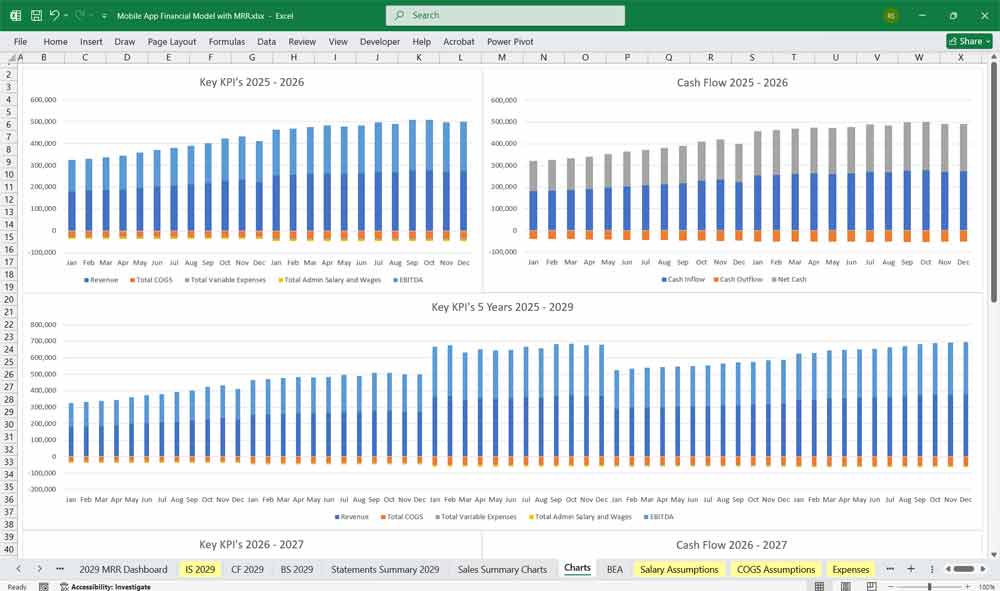
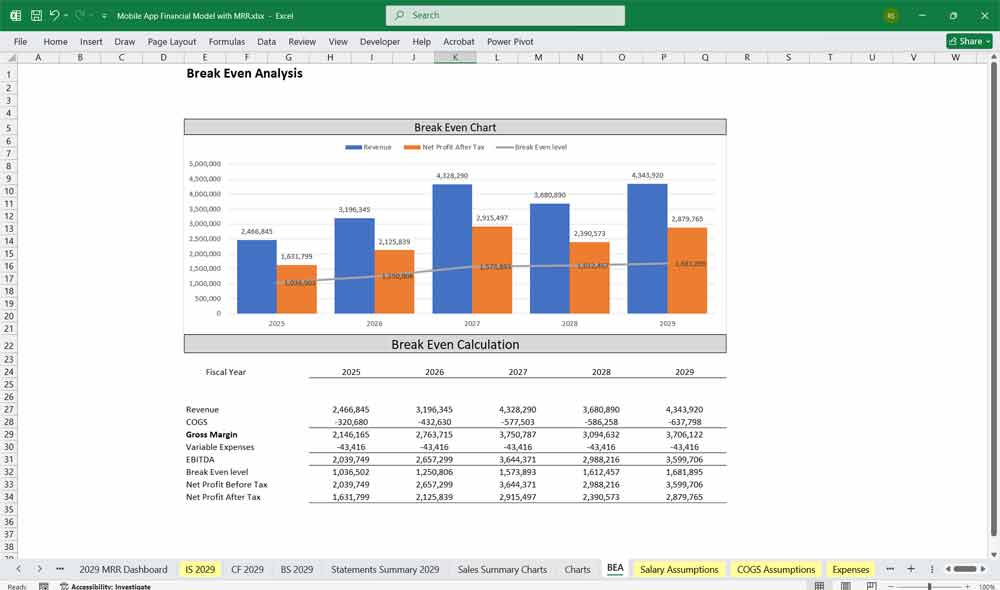
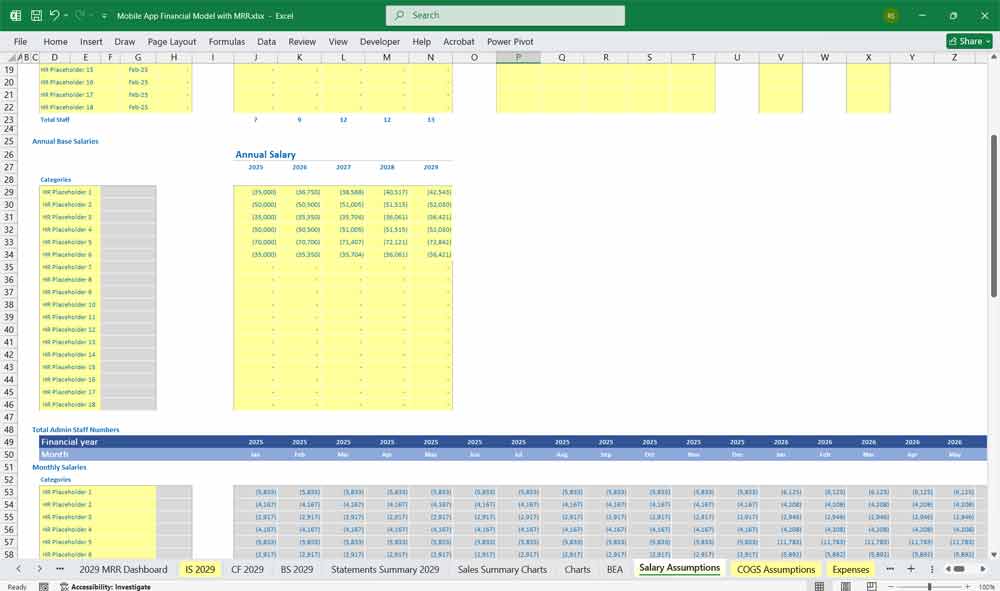
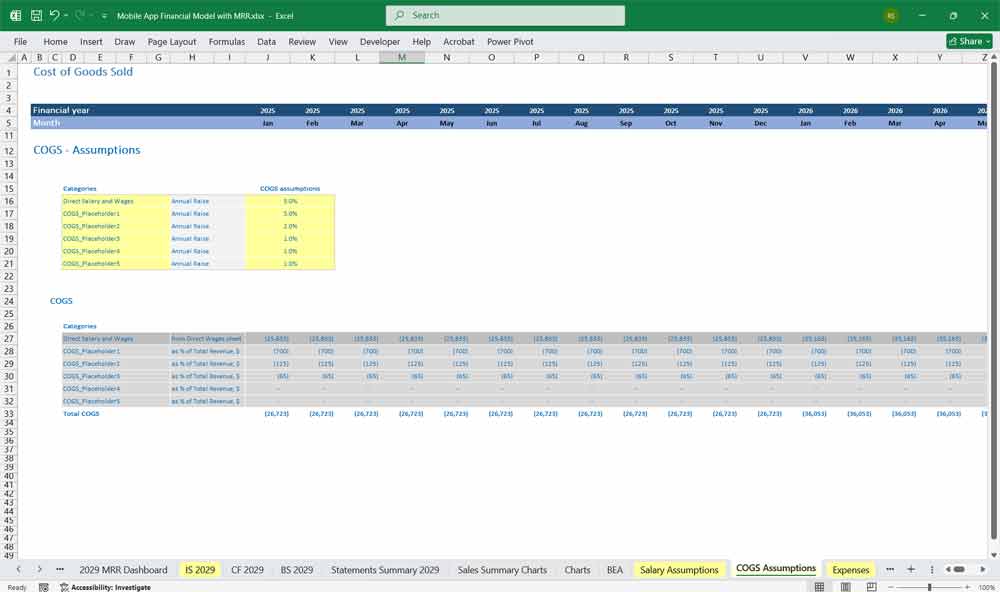
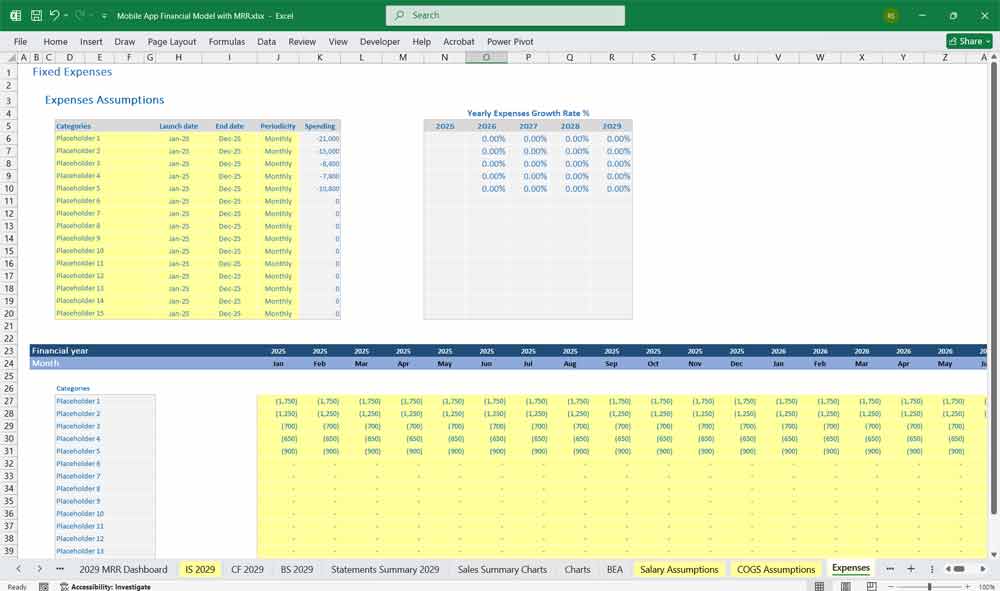
Final Thoughts for the Financial Model
A solid Mobile App Financial Model combines multiple revenue streams, optimized pricing strategies, and strong cash flow management. The six-tier subscription model ensures a broad user base while ad revenues and in-app purchases provide alternative income sources.
Download Available Immediately After Payment
Download Available Immediately After Payment
